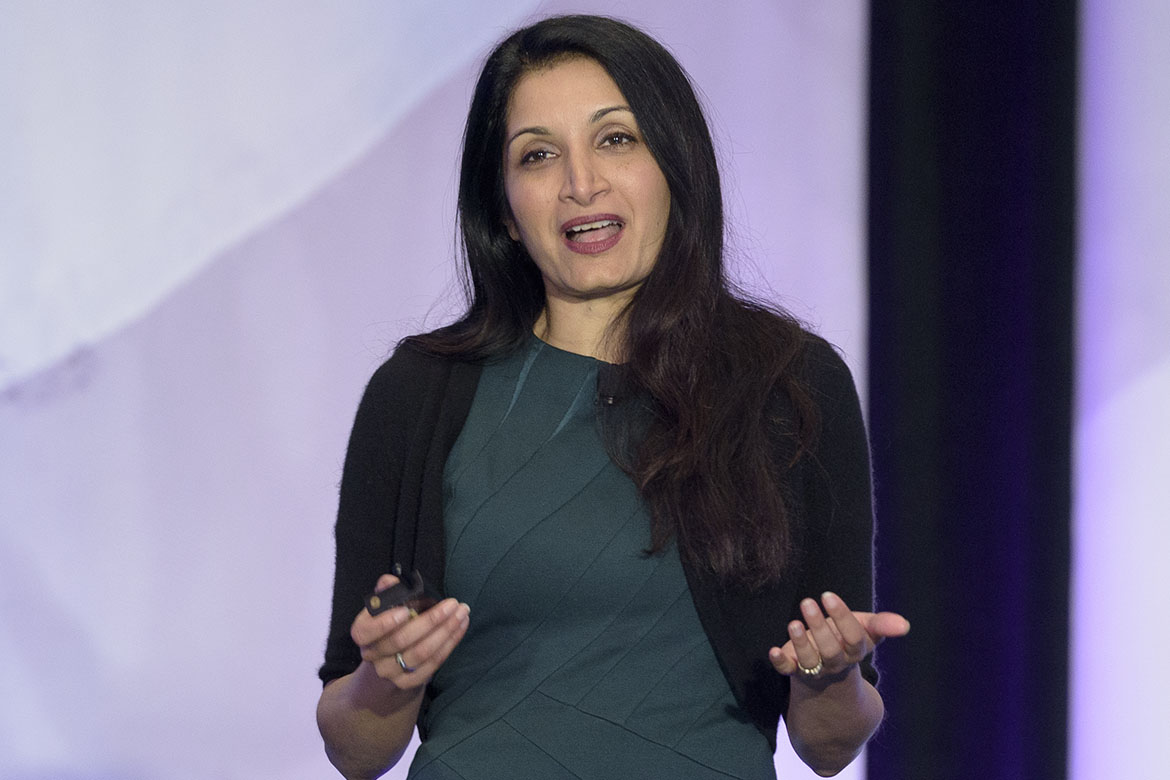Developers of digital health tools are recognizing the need to involve physicians in the design and use of their products, but doctors also need to find the time to participate in the process.
That was one of many messages delivered by Indu Subaiya, MD, a co-founder of the Health 2.0 digital media company that connects entrepreneurs, developers and health care stake holders.
Dr. Subaiya provided a snapshot of the digital health environment to physicians at the AMA National Advocacy Conference in Washington, D.C., offering a frank analysis of where things stand and the obstacles that impede the technology’s potential for improving patients’ health.
The AMA is working to make technology an asset to patient care and not a burden to physicians. This effort includes the development of a Digital Health Implementation Playbook that packaged key steps, best practices and resources to extend care beyond the exam room.
Dr. Subaiya said that, as technology threatens to overload physicians with waves of irrelevant data, doctors should share what information is helpful to them and be at the table when decisions are made about digital tool development and their organizations’ technology acquisitions.
To this end, it helps if health systems “not exhaust their workforce” so physicians have time to participate in “hackathons” and incubator situations where technology is developed and new ideas are put to test.
To this end, the AMA’s Physician Innovation Network allows physicians to influence the development of emerging solutions in health care as well as connect with health tech companies.
Digital tools put under microscope
Physician skepticism was noted, and it was acknowledged that the description of digital health tools as solutions in search of a problem may still often be a valid criticism, Dr. Subaiya said. But she added that the evidence base that these tools have value is growing.
She shared how there are 860 digital health clinical trials in progress, with 82 percent being conducted by organizations involved in the delivery of patient care.
While some physicians view digital health with skepticism, others view it with alarm because it is sometimes promoted as technology designed to replace them, Dr. Subaiya said. But she said that, while some first-generation products were aimed at full automation of the health care experience, more sophisticated companies are “pulling back” from that model and working with physicians to develop tools they can integrate into their practices.
Related issues are being addressed by Xcertia, a nonprofit co-founded by the AMA that is developing guidelines for mobile health (mHealth) apps. By establishing a framework to evaluate the privacy protection, security, content, operability and usability of mHealth apps, Xcertia hopes to build confidence among physicians and consumers that apps can be important tools to help people achieve their health goals.
Digital health cannot be ignored
Digital health companies differ from traditional health IT in that they focus on the user experience and create products that are interoperable, Dr. Subaiya said. And, while most digital products still center on health self-management, the largest area of growth involves decision-support tools.
There were 368 business deals made in the digital health space in 2018 with $8.1 billion changing hands, according to Rock Health.
This included a $1.9 billion transaction in which the Roche pharmaceutical company acquired Flatiron Health, a developer of oncology electronic health record systems that is also involved in “curating” cancer research.
“Is this a bubble? Maybe so,” Dr. Subaiya said, adding that, with Amazon and other tech companies getting into digital health, the boundaries of how we define technology and health care need to change.
She explained that new digital health companies fall into five technology layers:
- Data storage.
- Health care transactions with companies seeking to transform a broken billing process.
- Data exchange.
- Data analytics where “life information” is the preferred term instead of “health care data.”
- Interface—because “how we interact with data matters,” and companies here are seeking to “rehumanize” the health care experience.
“We still need to do things differently,” Dr. Subaiya said, explaining that this meant training, practicing and collaborating differently. She described how these changes could make a difference with solving the opioid crisis as new tools could be used for care coordination, patient education and connection, patient identification and monitoring, and integration of the social determinants of health into treatment.
She also told of how companies are saving the health care system millions of dollars with mobile health applications that facilitate virtual house calls that avoid office visits or facilitate acute care in the home and avoid hospitalizations.
At the end of her presentation, Dr. Subaiya was applauded by AMA President Barbara L. McAneny, MD.
“You elevated my optimism,” Dr. McAneny said, adding that she was encouraged to know that there are people like Dr. Subaiya working on these issues.




